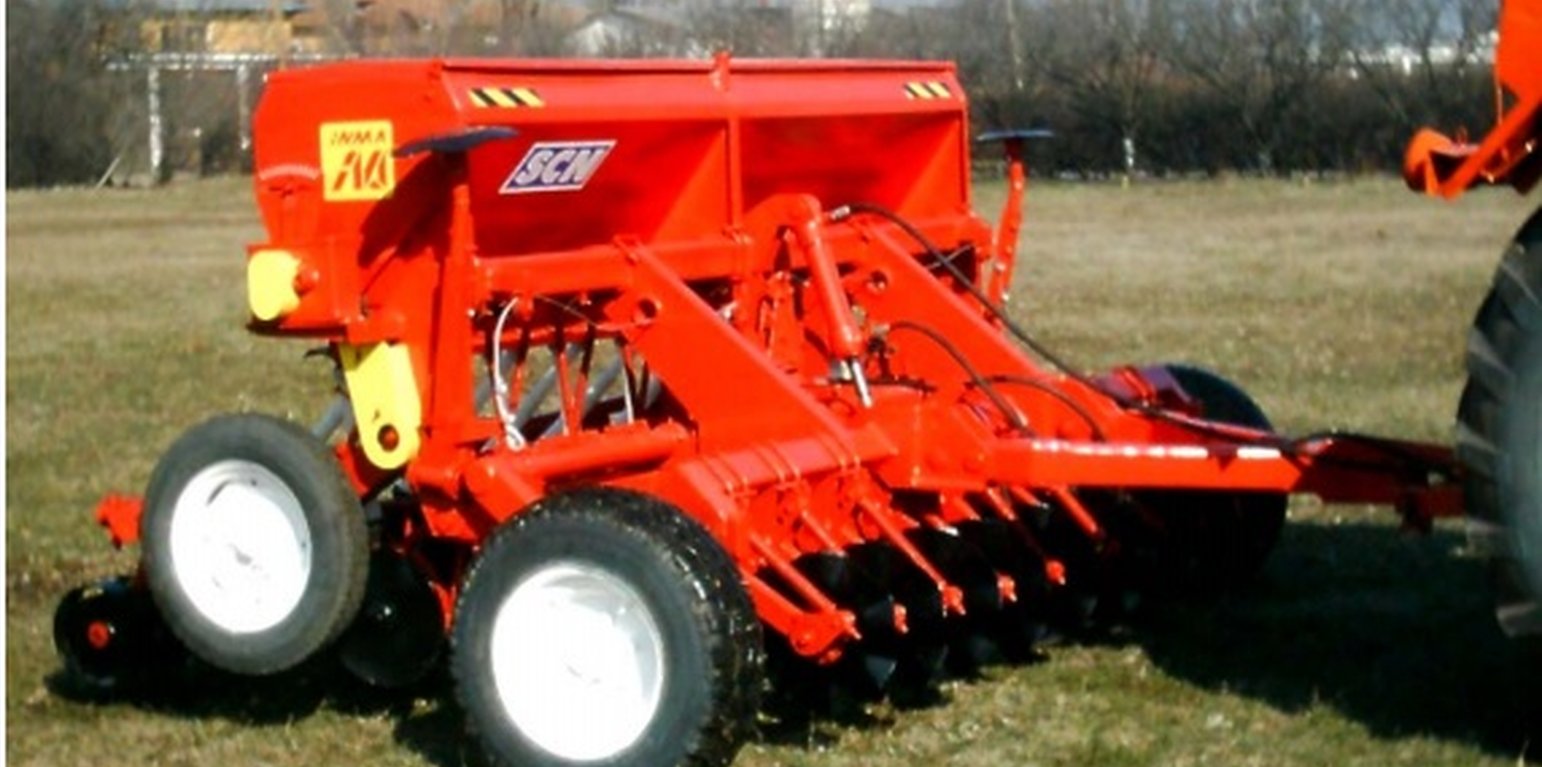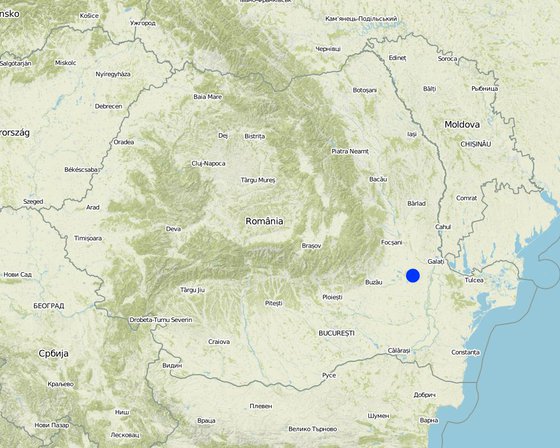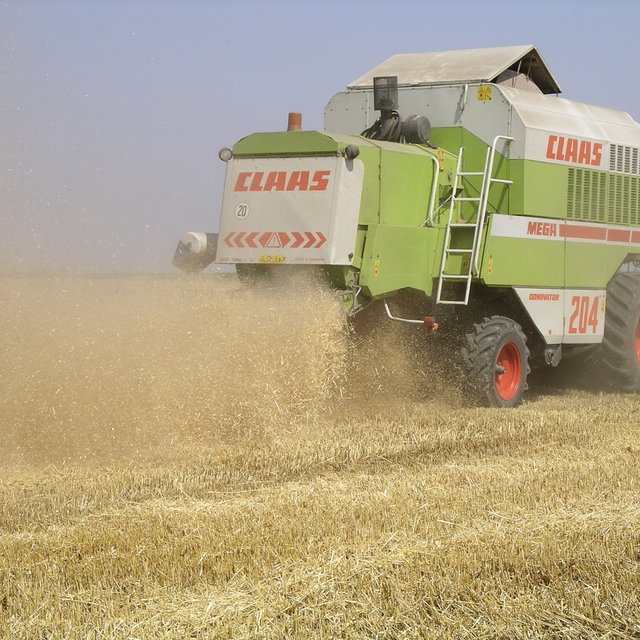



The technology is applied in Braila region and is located in north-eastern part of Romanian Plain. It has an agricultural area of 387,646 ha (of which 350,001 ha are arable land), and has specific geomorphologic, hydrological and climatic conditions which need to use ameliorative agricultural systems. Within Braila County are distinguished the following relief units: Calmatui Plain, part of the Braila Plain (51% from County area) and the Floodplains of Danube (Big Island of Braila), Siret, Buzau and Calmatui rivers (49% from County area).
Braila Plain is characterized by a specific micro-relief of Baragan type with large floodplains, poorly fragmented, with altitudes ranging between 20-25 m in the east part and 35-40 m to the west part, with soils mainly of chernozem type, formed on loess and loess deposits and which shows numerous small depression areas. Floodplains, areas adjacent to Danube, Siret, Buzau and Calmatui rivers are located at lower altitudes, ranging between 2-4 m and 13-15 m and are characterized by the presence of alluvial soils formed on river-limnic and alluvial deposits, with alternating of layers with different textures. According to United Nations Convention to Combat Desertification, Braila County is located in arid region with an average annual temperature of 10.9°C, long-term average annual precipitations (P) of 447 mm, potential evapotranspiration (ETP) of 705 mm (750-800 mm in dry years) and an average climatic water deficit of 258 mm (350-400 mm in dry years). The biophysical aridity index (P/ETP = 0.50-0.65) places the Braila region in area with moderate risk to desertification. Both intensive and extensive farming systems are practiced within Braila County. Intensive agriculture, characterized by high inputs and yield levels, is realized on large vegetal farms. On the other hand, extensive agriculture, with low input and yield levels, is practiced by farmers on small vegetal farms, and is so-called the semi-subsistent agriculture.
The direct drill (no-till) conservative tillage technology is an agronomic measure. It is practiced on medium to large size farms (from around 50 ha to more than 1000 ha) within the North-Eastern part of the Romanian Plain. Over the past years some farmers have changed their farming system from conventional to conservative. The main element of the technology is that the farmers use special agricultural machinery for direct seeding, and other tillage operations from conventional system, such as ploughing and disking, are not performed anymore. Also, under no-till farming system, the soil surface remains covered on 30% with plant residues from the pre-emergent crop.
The main purpose of the technology is to mitigate soil structure degradation due to less tillage passes on the land. The technology is applied on arable land with annual crops. The farmers have begun to adopt this technology due to reduction in fuel consumption and working hours. For this reason, the technology has economic advantages. The no-tillage system requires a special direct seeding machine, and this can be expensive. So, most of the farmers don't buy it on their own, but they rent the seeding machine from other farmers.
In the land user's view, the strengths of the technology are as follows: reduced fuel consumption, improved soil water regime and tillage of larger field areas with less personnel and less trafficability and workability. In addition, the weaknesses of the technology reported by the land user might be: difficulties in weeds and pests control due to spread of straw-borne diseases which can be countered by in-depth knowledge of biocides, and high investment costs for equipment purchase which can be met by application for non-reimbursable funds or renting the equipment from other farmers or agricultural contractors.

ទីតាំង: Braila, Braila, ប្រទេសរូម៉ានី
ចំនួនទីកន្លែងបច្ចេកទេស ដែលវិភាគ: 2-10 កន្លែង
ការសាយភាយនៃបច្ចេកទេស: ត្រូវបានផ្សព្វផ្សាយត្រឹមតំបន់មួយ (approx. < 0.1 គម2 (10 ហិកតា))
តើស្ថិតក្នុងតំបន់ការពារអចិន្ត្រៃយ៍?:
កាលបរិច្ឆេទនៃការអនុវត្ត: 10-50 ឆ្នាំ
ប្រភេទនៃការណែនាំឱ្យអនុវត្តន៍៖




| បញ្ជាក់ពីធាតុចូល | ឯកតា | បរិមាណ | ថ្លៃដើមក្នុងមួយឯកតា (ដុល្លារ) | ថ្លៃធាតុចូលសរុប (ដុល្លារ) | % នៃថ្លៃដើមដែលចំណាយដោយអ្នកប្រើប្រាស់ដី |
| កម្លាំងពលកម្ម | |||||
| labour | person-days | 0,2 | 17,6 | 3,52 | 100,0 |
| សម្ភារៈ | |||||
| direct sowing | machine-hours | 1,0 | 20,78 | 20,78 | 100,0 |
| ថ្លៃដើមសរុបសម្រាប់ការថែទាំដំណាំតាមបច្ចេកទេស | 24.3 | ||||
| ថ្លៃដើមសរុបសម្រាប់ការថែទាំដំណាំតាមបច្ចេកទេសគិតជាដុល្លារ | 5.9 | ||||
Technology enables farmers to work more land areas at lower costs and with less equipments. So, they can increase their farm areas.
Direct sowing equipments are expensive.
Less personnel costs are required.
Knowledge about this technology can be also obtained by farmers from the Agricultural Research and Development Station of Braila
The plant residues from soil surface prevent the soil water loss by evaporation.
Leaving the plant residues from the previous crop at the soil surface can improve the soil organic matter content.
Leaving the plant residues from the previous crop at the soil surface has beneficial impact on soil fauna.
Leaving the plant residues from the previous crop at the soil surface after harvest reduces wind transported sediments slightly.